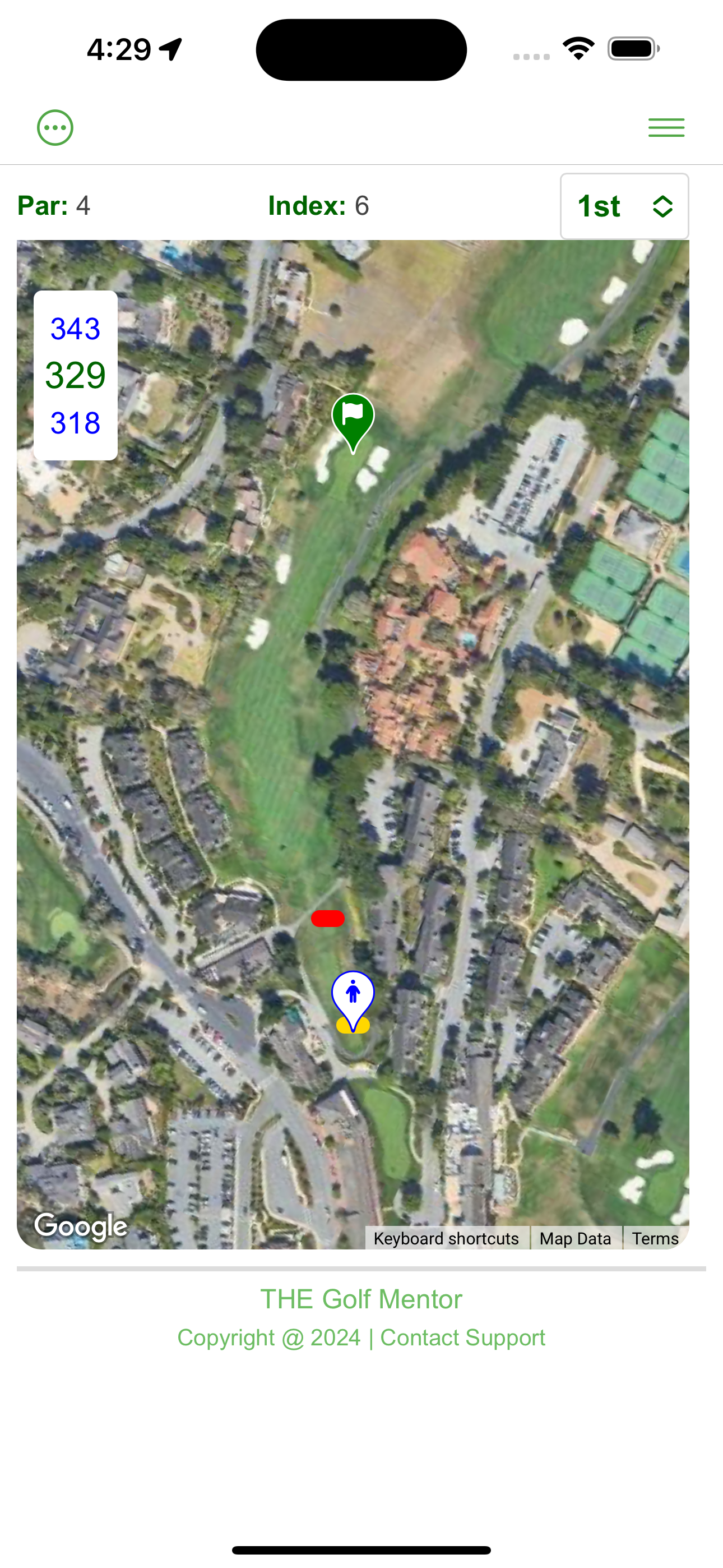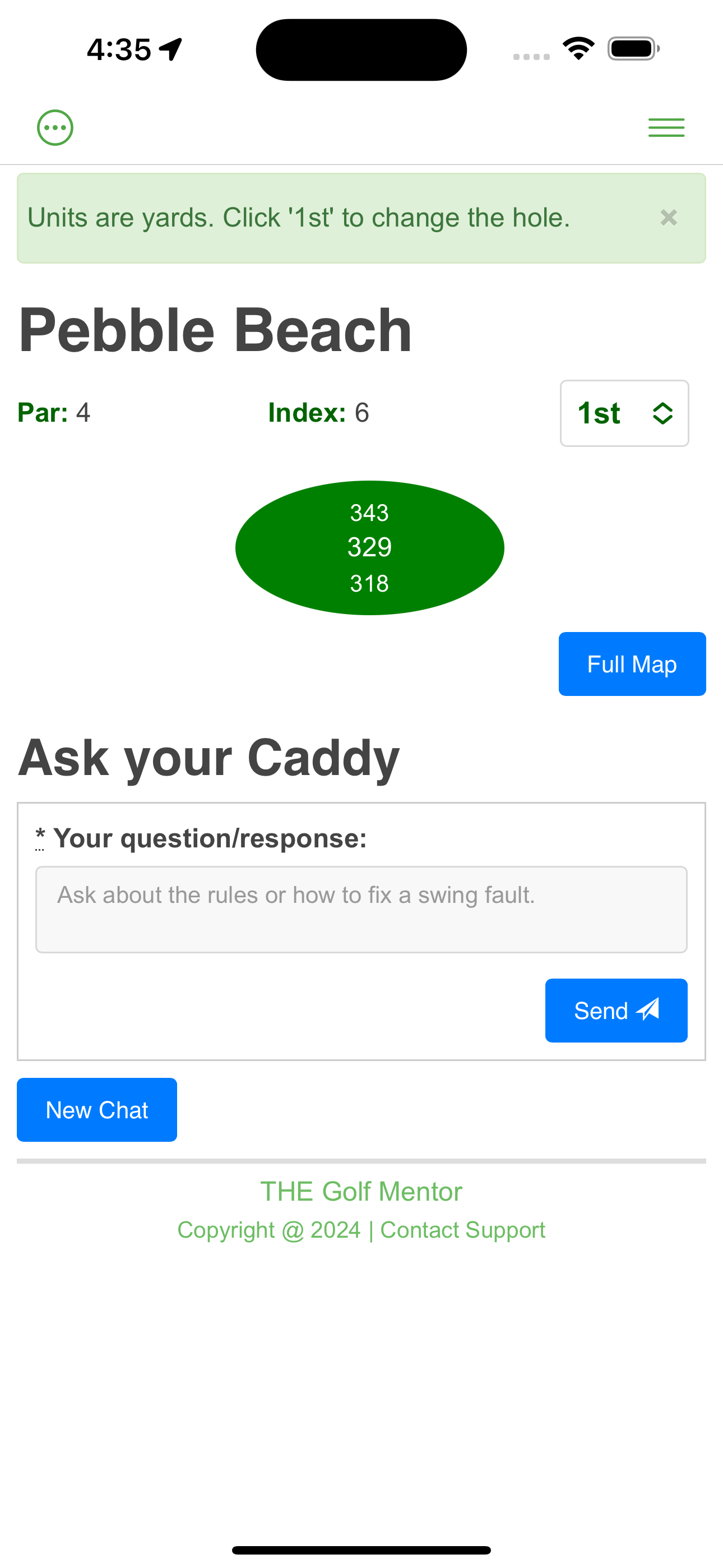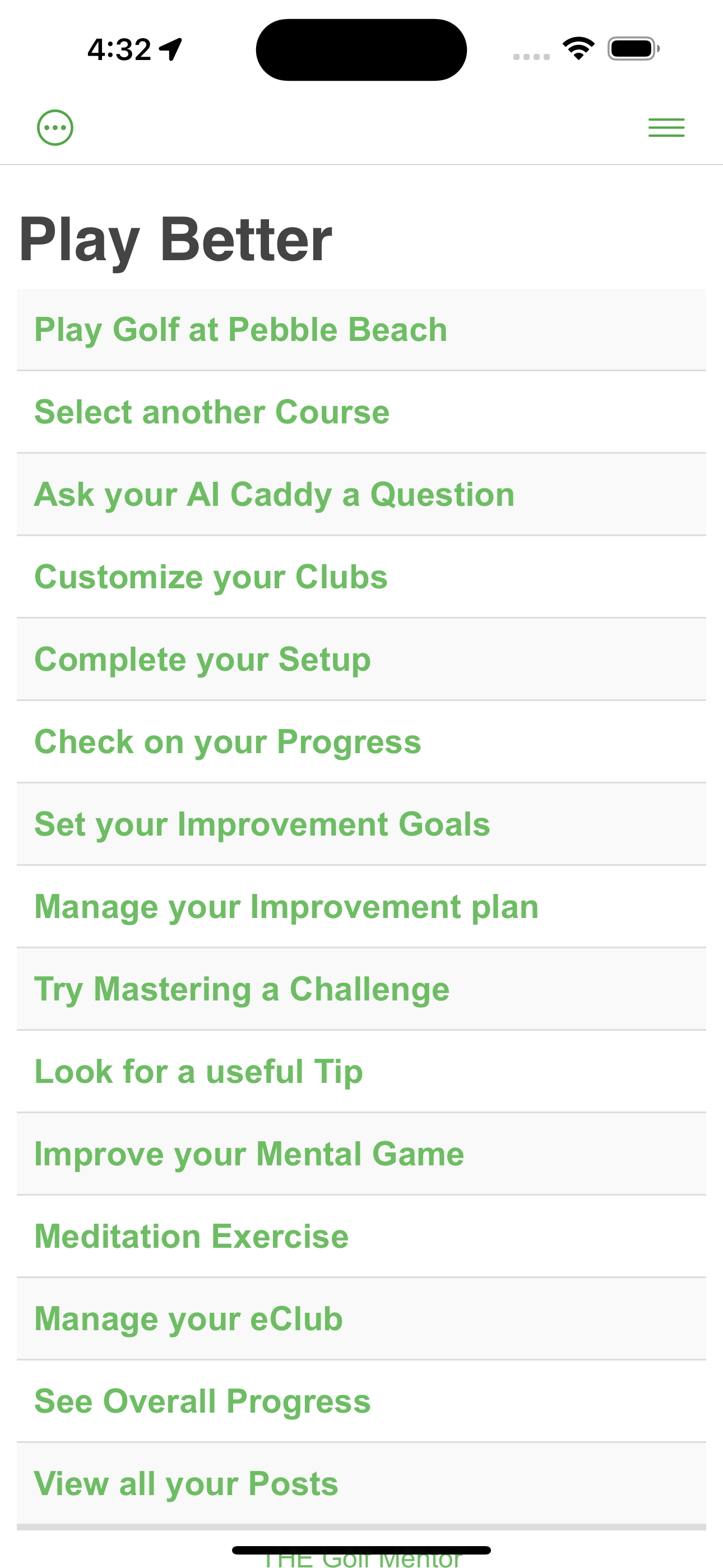Top Golf Putting Tips
Concentrate on the Basic Putting Stroke
There are two elements to being a good putter. The first is the mechanical aspect of having a reliable putting stroke. The second is the almost magical ability to read the contours of the green so your body knows how to how hard and in what direction to putt the ball. In order to develop the ability to read greens, you are best concentrating on the stroke first. Once you have a confident, repeatable putting stroke, you have a firm foundation to learn how to read the green. If you spend a lot of time learning how to read the greens before you have a good putting stroke, then you will not be able to tell whether you have missed the hole because of your putting stroke or a mis-read of the green.
Free Trial of GPS Distances to the green



Want to Improve Quickly?
For over 13 years, Golf Mentor has been helping golfers enhance their skills. It is now powered by the amazing Artificial Intelligence of ChatGPT.
You can cancel at any time within the 14 days trial at no charge. By signing up, you are agreeing to our Terms and Conditions. All credit card transactions are directly processed by Stripe, who handle billions of dollars of transactions per year. Even using the Golf Mentor during the trial period can make a big difference to your game. Why not join the thousands of other golfers who have tried the Golf Mentor?
How to Read the Green
Reading greens is one of the most difficult golf skills to learn. However, there is an easy way to improve this skill on your home course. Visit your course late in the evening or early in the morning, and just take a putter, a few balls, and a notebook. Go to each green, and assess the way the green rolls. Then putt enough balls to refine your instinct, assuming different pin positions. After you have mastered each green, write down what you have found in a note book and re-read that notebook every month or so for a few months, annotating further if necessary. By the end of this process you should not only have a much better idea of your home course greens, but have a better instinct for other course's greens
How to how to control your putting distance.
If you want to learn more how to control the distance of your putts, please visit our distance_tips.
Putting with Physics from Wired
A Yale professor has come up with a new approach to putting. Bob Grober analysed the theoretical trajectory of putts taken from an equidistant arc on a sloping green. He found the rather surprising result that the aim point is in a small diamond shaped area even for putts from widely varying angles. This assumes that you going to hit the ball sufficiently hard that it will end up 18 inches after the hole if you miss.
Translating this insight into practice, you should sight your putt from directly behind the ball, fifteen degrees to one side and fifteen degrees to the other side. In each case work out the aim point near the hole, and then take the average of the three aim points to work out where to aim your putt.
The theory only holds for simple putting surfaces, but sighting from three different angles probably helps you to get a better feel for the likely trajectory even on an undulating line. Compared to other methods, you do not have to assume an unsightly pose nor slow down the speed of play.
Learn how to perfect your putting from BBC Sport
This is from the BBC golf instructional site. One feature of the site that I really like is that animations are used to demonstrate different aspects of the stroke. The animations are a simplification that means you can concentrate on the essence. There are also neat tips from star golfers, for instance there is a quote from Tiger Woods, "Remember, your hand leads, the clubhead trails". The lesson is divided into four parts,each dealing with a different aspect of the stroke. One tip I really liked was to watch the ball for the count of two before looking up to see how the putt went. This alone can save you from many over anxious misses. Definitely worth visiting.
Do not move ball whilst you are trying to putt!
You might think the title sound weird, why on earth would you move the ball when you are trying to putt. But in fact many people do. You see, if you move your head while you are putting, then relative to your body, the ball is moving! You do not have to be an Einstein to understand this form of relativity. So develop a habit where just before you putt, focus the back edge of the ball, and do not move your head until you have finished the stroke.
How to read a putt from Julio Nutt of the Jim McLean Golf School
This short video (less than two minutes), provides some useful tips on how to read a green. The most interesting tip is to visualise pouring water onto the green and imagine how the water would flow. Julio also explains how the grain of the green can affect the break. The grain is particularly important if you are playing on Bermuda greens.